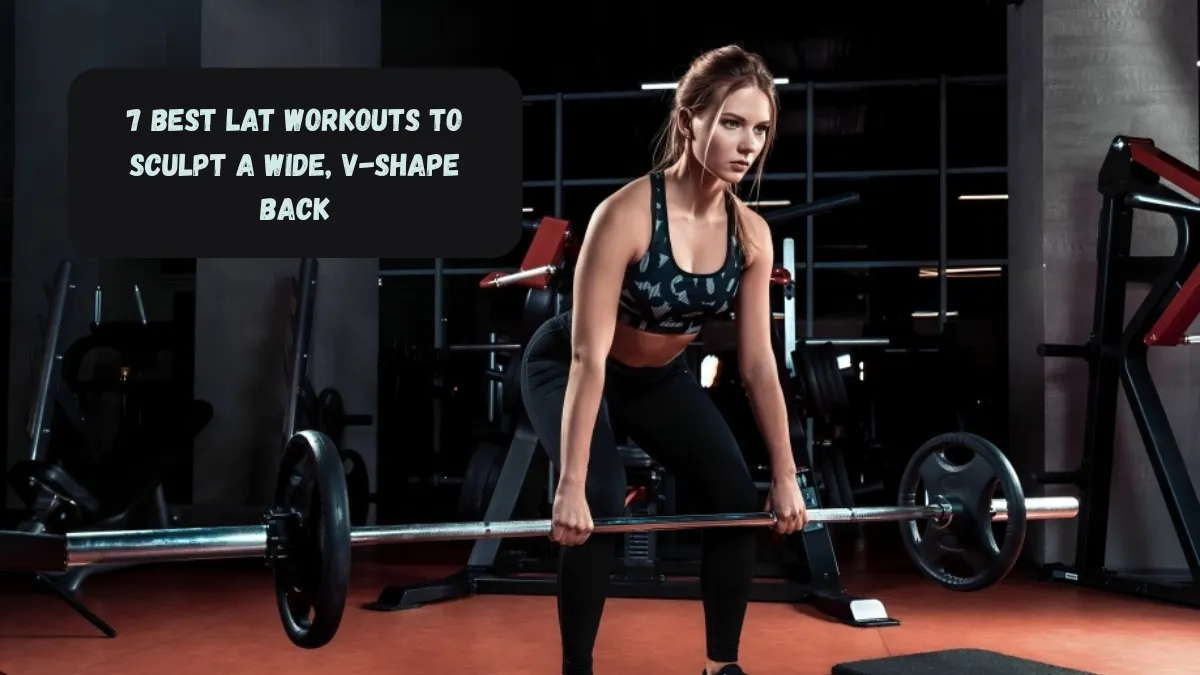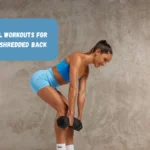Very few things are as powerful as a well-developed back when it comes to making your body stand out. Having a strong V-taper, which is made up of wide, sweeping lats and a tight waist, isn’t just about looking good; it shows that you train hard and in a healthy way.
If a man wants to improve his body, he must work on the latissimus dorsi, which is the biggest muscle in the back. But pulling heavy isn’t the only way to make a V-taper that turns heads. You also need to use smart design and good form, and pay attention to both width and thickness.
Diversification is the key to a great back, says Mike Reynolds, a trained strength teacher and body expert. For a full look, you need workouts that work the lats from different directions and also work supporting muscles like the rhomboids, traps, and rear delts.
1. Wide-Grip Pull-Ups
Wide-grip pull-ups are the best way to make your lats wider and get that desired V-taper. This version makes the outside of your lats stand out, which makes your shoulders look bigger.
To do them, hold a pull-up bar over your head with your hands wider than shoulder-width apart. Hold on to the bar with your arms fully stretched. Tense your core and pull your chest toward the bar by bringing your elbows down and back. Keep your balance as you go down until your arms are straight again. Aim for three to four sets of six to ten reps each.
Use training bands or an assisted pull-up machine to get stronger if you’re having trouble with bodyweight pull-ups. Mike Reynolds, a qualified strength teacher, says that wide-grip pull-ups are the best way to widen your lats. “At the top of each rep, squeeze your lats as hard as you can for the best contraction.”
2. Close Neutral-Grip Lat Pulldowns
If you can’t do weighted pull-ups yet, the close neutral-grip lat pulldown is a great option. When you use a narrow, parallel-grip handle, you can move more freely and focus on the inner lats to make them thicker.
Hold your core tight, lean back a little, and pull the bar down to your upper chest while sitting at a cable station. Return your arms slowly to the starting position. 3–4 sets of 8–12 reps should be done. Don’t use motion; instead, keep the weight under control the whole time.
3. Barbell Rows
When you do barbell rows, you build muscle in your lats, strengthen your mid-back, and improve your balance. With your feet shoulder-width apart, bend forward at the hips, and hold a barbell with your hands over your head.
Row the bar toward your lower ribs while keeping your chest up and back flat. You should be able to lower the bar without arching your back. Aim for 4 sets of 6–8 reps each. To get the most out of your muscles, take a short break at the top of each rep.
Reynolds says, “Barbell rows are hard, but they work.” “They get bigger and denser more quickly than almost any other move.” Stick to strict form to avoid damage and get the most out of your lat exercises.
4. Single-Arm Dumbbell Rows
By working out just one side of your back at a time, single-arm dumbbell rows are great for fixing weaknesses. Put one knee and one hand on a bench. With the other hand, hold a dumbbell. Keep your arm close to your body as you pull the object toward your hip. Slowly lower it back down.
Do 3 sets of 8–12 reps on each arm. Reynolds suggests that to better work your lats, you should think about “pulling through your elbow.” At the top of each rep, squeeze your shoulder blades together to get the most tension. These rows work the lats and make the back more balanced and symmetrical as a whole.
5. T-Bar Rows
The T-bar row is one of the best exercises for building back strength. Because of how it’s set up, it can hold heavy loads while still being stable. Stretch out your legs, bend your hips, and grab the handle with both hands. You can also use a landmine extension. Squeeze your shoulder blades together as you row the weight toward your stomach. Then slowly lower it.
Do 3–4 sets of 8–10 reps each. To get more time under stress, keep your body still during the movement and focus on controlled eccentric phases. Reynolds says this move is the best of both free weights and machines. “It’s great for putting on weight.”
6. Face Pulls
If you want to build muscle in your upper back and keep your shoulders healthy, you need to do face pulls. Put a cable machine at eye level and connect a rope handle to it. Take a step back, split your feet, and pull the rope toward your face while spreading your arms out. At the end of the movement, take a short break before going back to the beginning.
Do three sets of 12 to 15 reps. Reynolds says to avoid shrugging your shoulders and keep stress on the back delts. Face pulls improve form and posture, but they don’t directly build lats. They also help build a healthy, injury-resistant body.
7. Deadlifts
Although deadlifts are known as a posterior chain exercise, they are also very important for building up your back as a whole. They use the lats to keep the bar steady and make the back thick all the way across.
Stand with your feet about hip-width apart and your hands on either side of the load. Bend at the hips. Stand tall and push through your feet. Keep your back flat. While keeping strain in your lats, slowly lower the bar.
Do 3–4 sets of 5–8 reps each. To fully work your lats, Reynolds says to “pull the slack out of the bar” before you lift. Before moving on to bigger loads, start with lighter ones to get good at the skill. Because they build physical strength and big slabs of muscle, deadlifts are the best way to build your back.




